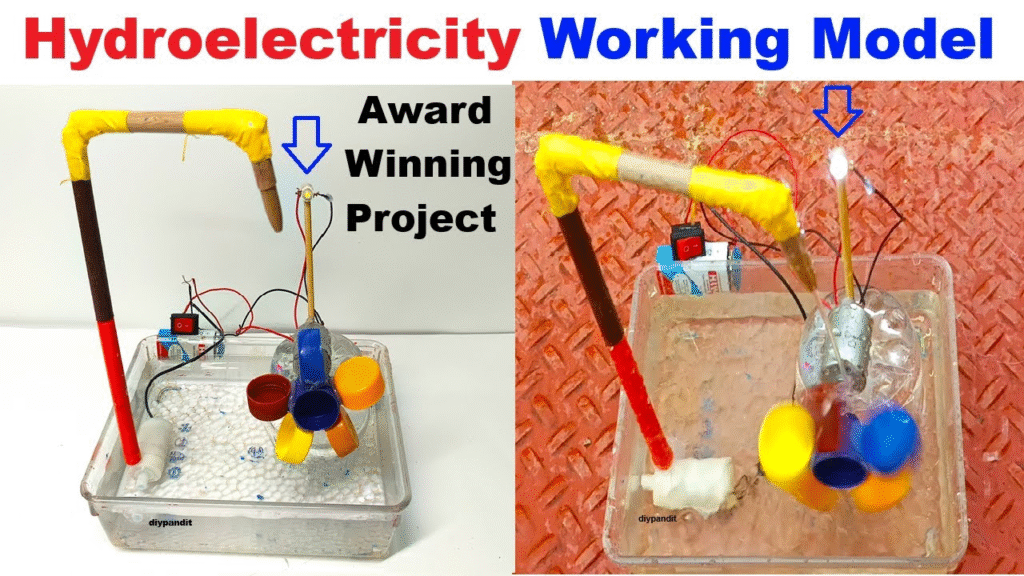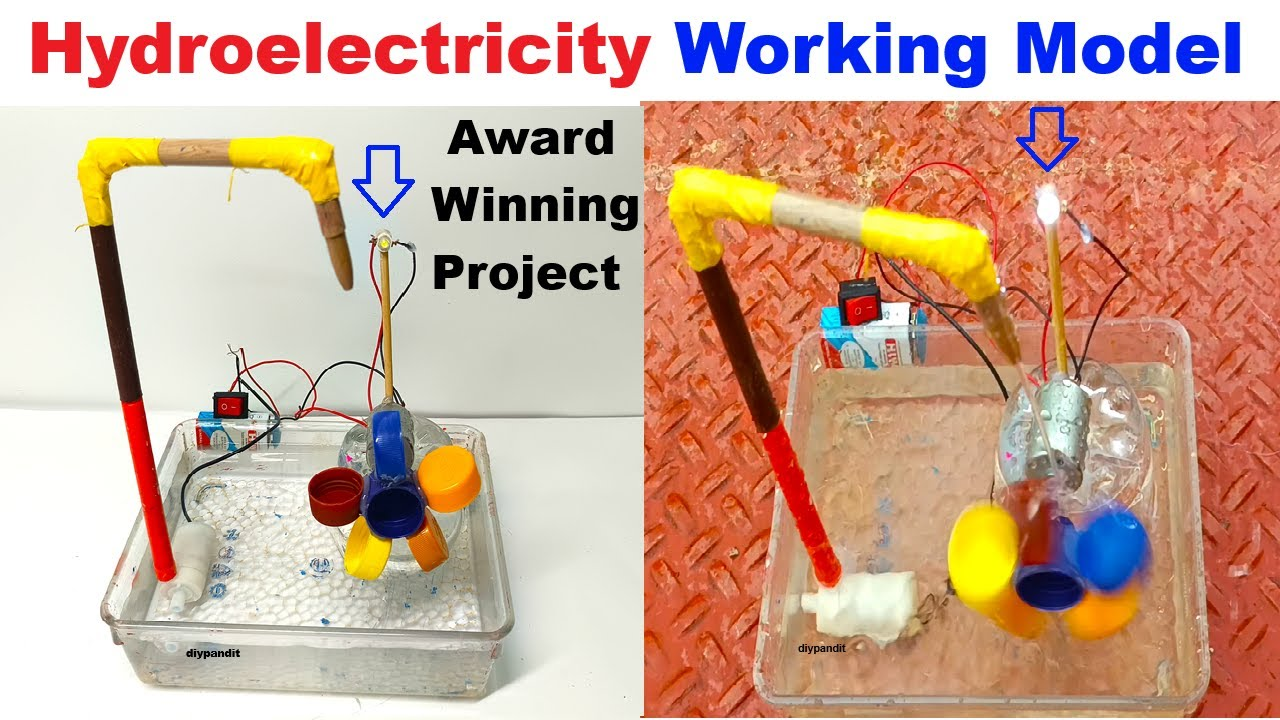Aim / Objective:
To demonstrate how flowing water can generate electricity using a simple hydroelectric setup with a turbine made from waste materials.

Materials Required:
- DC motor (acts as turbine/generator)
- Small water pump (DC pump)
- Waste sketch pens (to act as water pipes)
- Bottle caps (to make turbine blades)
- Plastic container or bottle (to hold water)
- Wires and LED light
- Glue or tape
- Switch (optional)
- Cardboard or small base to hold components
Working Principle:
The model works on the principle of hydroelectricity:
- Water flowing through pipes strikes the turbine blades, causing them to rotate.
- The turbine is connected to a DC motor, which acts as a generator, converting mechanical energy into electrical energy.
- The generated electricity can light up an LED, showing energy conversion from water flow → mechanical rotation → electricity.
Procedure:
- Fix the DC motor vertically or horizontally on a base.
- Attach bottle caps to the motor shaft to act as turbine blades.
- Connect the motor terminals to an LED using wires.
- Cut and assemble waste sketch pens to make a pipe system that directs water from the pump onto the turbine blades.
- Place the water pump in a container of water and connect it to the sketch pen pipe.
- Turn ON the pump to flow water through the pipe onto the turbine.
- Observe how the turbine rotates and lights up the LED.
Observation:
- When water flows through the sketch pen pipe, it strikes the turbine blades, causing them to rotate.
- The rotation of the DC motor generates electricity, lighting up the LED.
- This shows that water energy can be converted into usable electrical energy even with a small DIY model.
Conclusion:
The model demonstrates the basic working of a hydroelectric power plant on a small scale.
It shows how renewable hydropower can be harnessed using flowing water and converted into electricity.
This project also highlights reuse of waste materials to make a functional model.

